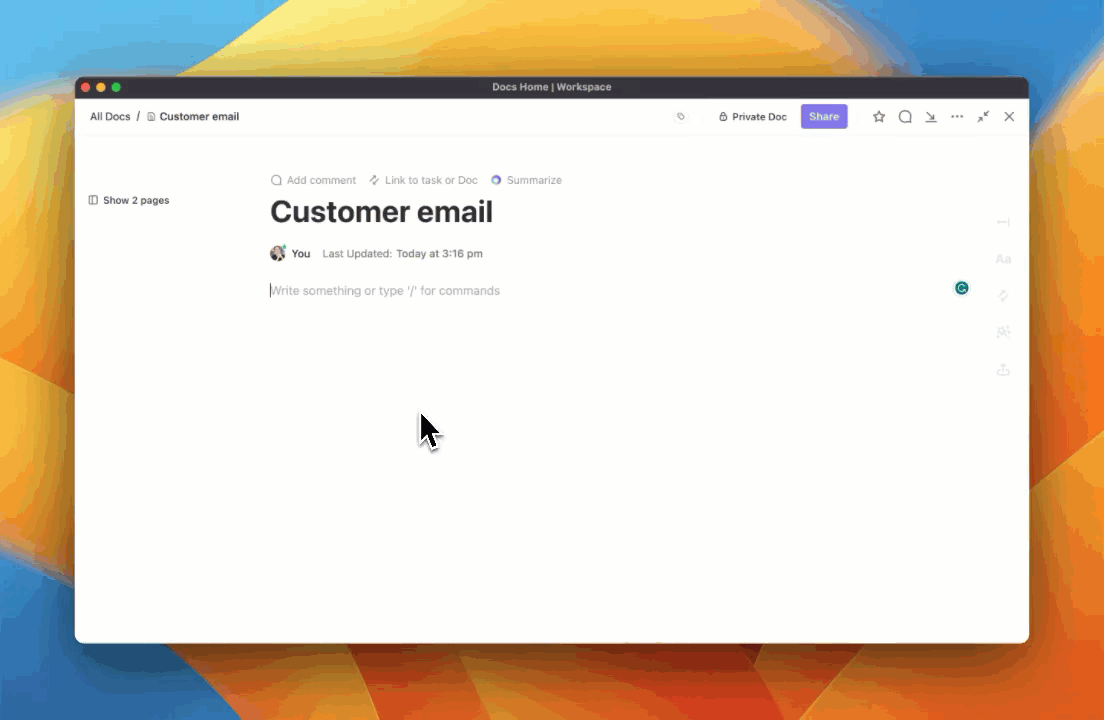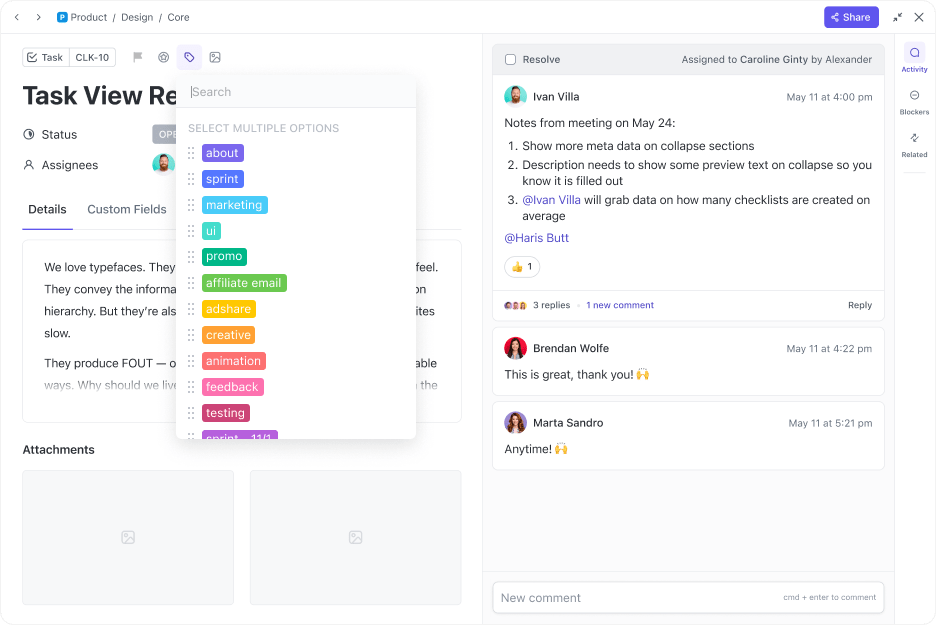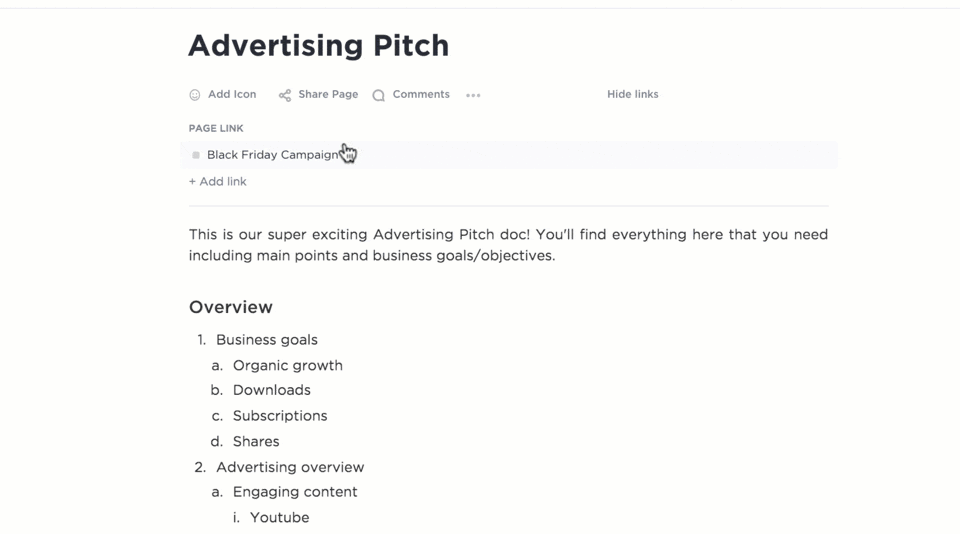How to Implement an Effective Feedback Management System

Sorry, there were no results found for “”
Sorry, there were no results found for “”
Sorry, there were no results found for “”
Ever wonder what your customers are really thinking?
Their feedback can be a goldmine of insights—if you know how to manage it well.
Setting up an effective customer feedback management system isn’t as complicated as it sounds. In fact, with the right feedback management tool, you stop guessing what your customers want and start delivering exactly what they need.
Let’s dive into how you can gather actionable customer feedback, gain valuable insights into your users’ needs and preferences, and make informed product and business decisions.
Feedback management is the systematic process of collecting, analyzing, and responding to feedback from various internal and external stakeholders.
This three-step process primarily involves:
Managing customer feedback effectively is crucial for improving your business. Let’s understand why.
Customer feedback tells you what’s working, what’s not, and how to improve! Managing this feedback skillfully helps you understand what your customers are thinking and gives you the tools to make things right. It lets you:
Fun Fact: 12.8% of all customers, on average, complain across industries.
Understanding customer feedback can be a bit like piecing together a puzzle. There are lots of ways to gather and analyze insights, but they generally fall into two main categories: Direct feedback and indirect feedback.
Both types are essential for a comprehensive understanding of customer experiences and preferences.
By choosing the right channels to gather customer feedback, you can better understand how people perceive your products or services and highlight areas for improvement.
To ensure you’re gathering valuable insights, let’s explore some powerful channels for capturing customer feedback.
With that in mind, let’s dive into six powerful tools for capturing customer feedback—and how ClickUp supports these efforts:

When it comes to direct feedback, few things beat surveys or questionnaires.
In-app surveys or questionnaires sent over communication channels like email capture customers’ interest as they use your product or software. Such engagement allows them to share highly relevant and timely feedback.
Email surveys or questionnaires can be sent in response to customer action, such as cart abandonment or a slowdown in usage rates.
The ClickUp advantage: Choose from a range of pre-built feedback form templates or create custom surveys and questionnaires to collect customer feedback. Use ClickUp’s automations to automate the analysis of responses. Link actionable feedback to tasks with varying priorities.
Customer interviews and user feedback reveal detailed insights into how customers use and interact with your product. Such direct customer interactions offer a window into customer pain points, preferences, and the overall customer experience.
The ClickUp advantage: The Calendar View on ClickUp allows you to schedule and track customer interviews. When used with ClickUp Notepad, this allows you to capture customer feedback instantly.
Customers typically use social media to share their needs, feedback, opinions, and sentiments about your product or service. Quick response and intervention on such public platforms will strengthen brand image and inspire confidence.
The ClickUp advantage: Integrate social media monitoring tools like Hootsuite or Brandwatch with ClickUp to empower your social media management (SMM) teams. In addition to converting feedback into tasks, the SMM teams can utilize the AI writer module of ClickUp Brain to craft personalized messages relevant to the situation, such as apologizing for poor service in response to negative feedback for instant damage control.
User testing involves gathering customer feedback as they interact with a new feature or product before its public release. This methodology helps identify usability issues and ensures that the product or service matches customer expectations.
These are targeted surveys in which customer loyalty is rewarded with exclusive access to new features and updates.
The ClickUp advantage: Use ClickUp as a CRM to identify your high-value customers and involve them in user testing exercises. Correlate their user stories with client relationships for in-depth sentiment analysis and feedback priority.
Embed feedback widgets within your software or website to collect feedback spontaneously. This could be after they have completed a purchase or a major milestone. Such widgets allow customers to share their opinions and experiences in real time.
The ClickUp advantage: Route widget inputs to ClickUp Automation to capture, categorize, and analyze customer feedback data. Based on the outcomes, ClickUp can convert the feedback into a task or escalate it for human review.
Customer support interactions, whether tickets or live chat messages are a goldmine of customer feedback. Analyzing customer support conversations illuminates recurring issues, feature requests, and areas where the product or service falls short.
The ClickUp advantage: Integrate ClickUp with your helpdesk software and centralize customer support feedback onto ClickUp Docs. This will allow you to create tasks automatically and follow up with customers, ensuring that every support request is acted upon instantly and efficiently.
Developing a structured customer feedback management system requires a strong framework to ensure that every reasonable piece of feedback is acted upon and drives improvements.
Here’s how you can master this:
Collect customer feedback through well-designed forms that integrate with your software, website, or application. You’ll need a customer management feedback tool to capture customer inputs.
You can create custom surveys within the project management ecosystem using ClickUp Forms. This allows the customer feedback to flow directly into your workflow. Alternatively, there are Google Forms or templates that can be customized to fit different settings.

These customer feedback collection points should be spread across the different stages of the customer journey—pre-purchase/registration, post-purchase/registration, after-support interaction, a major update rollout, and so on. By doing so, you can capture a broad spectrum of customer feedback from different stages and fuel quicker responses and more informed decision-making.
After collecting customer feedback, the next task is to organize the survey data to consolidate inputs from various channels. This data must also be standardized, as the feedback may be available in different formats.
Establish a clear system for categorizing and prioritizing customer feedback to ensure nothing slips through the cracks. Start by grouping user feedback into logical categories—for instance; software teams may segment customer feedback into feature requests, usability issues, design improvements, etc. By grouping feedback, you can identify high-priority feedback and address it first.
ClickUp offers various organizational features to sort through and prioritize feedback, such as ClickUp Task Tags and priority levels. Plus, Lists and Board Views provide users with control over how they wish to track and manage feedback.

Analyzing customer feedback is where the raw inputs translate into actionable insights. As you analyze customer feedback, you’ll notice trends or patterns, recurring pain points, and opportunities for improvement. The objective here is to draw logical correlations to enrich the product development process and business decisions.
Since you already have customer feedback in an organized form, simply plug them into ClickUp’s Dashboard and Reporting Tools to visualize all data. Such data visualization techniques will make it easier to detect feedback trends and forecast the impact of specific issues or decisions.
Additionally, sentiment analysis tools help gauge customer satisfaction levels, offering more insight into how customers perceive your product or service.

Such granular customer feedback analysis facilitates the prioritization of high-impact changes to enhance customer experience and drive customer retention. In addition to these immediate effects, it also lays the foundation for long-term strategic goal attainment.
Now that you have your finger on the customer’s pulse, the next stage of managing customer feedback involves responding to customer inputs.
Based on your priority list, start implementing changes to improve the product or service in response to customer feedback. This may include adding requested features, fixing bugs, redesigning the UI, and more. Such prompt action improves the customer experience and enhances product value while demonstrating the effectiveness of your customer feedback management process.
As mentioned, ClickUp translates customer feedback into actionable tasks that you can assign to appropriate teams. Creating tasks rich with detailed task descriptions, clear deliverables, timelines, and priorities empowers your team to address crucial customer feedback first.

After implementing changes based on customer feedback, it’s time to measure the impact and monitor the results. Use customer success software to track how the feedback-led changes affect customer relationships, engagement, customer experience, and other relevant metrics.
For example, you may notice a decline in the Customer Effort Score (CES), which measures the effort customers need to put in to experience your products and services. This dip is a good sign, as it will increase customer satisfaction and strengthen customer loyalty.
Consider deploying ClickUp as product feedback software to collect customer feedback in real time in response to the changes introduced. The automated workflows in ClickUp can track predefined Key Performance Indicators (KPIs) associated with the change and allow you to monitor their effectiveness continuously and over a significant period.

Closing the feedback loop is the final stage of the customer feedback management process. It helps cultivate strong customer relationships as you inform customers how their inputs were instrumental in driving product improvements. This demonstrates that you value customer feedback and are committed to continuous improvement. It also makes your business approachable, as customers are more open to sharing feedback.
Automate this action using ClickUp. You can set up triggers for follow-up communications with customers once their feedback has been addressed.
For instance, you may send an automatic email thanking a customer for their feature request and inform them that the same is now live on your app. This displays your commitment to effective customer feedback management and continuous improvement.

Choosing the right feedback management tool makes a world of difference. After all, you’re working with customer data, and the insights are only as good as the quality of data and the tools used to process it.
So, whether you’re looking for a highly versatile project management tool or dedicated customer feedback management tools, here are our top five picks:
No surprises here, as ClickUp is a one-stop project management platform that offers robust customer feedback management capabilities.
We’ve explored several of its features and abilities in this article.
If you need help, the Feedback Form Template by ClickUp is a great place to start. Use it to create customizable forms to capture customer feedback directly and incorporate it into your workflow.
This template streamlines end-to-end feedback management—from collecting feedback to tracking customer reaction to changes. This template should be a component of your project management system because of the following features:

Canny is a specialized feedback management tool designed to aid companies in customer feedback management.
Customers use Canny to submit feedback directly on the app or website, while other users can upvote suggestions. This prevents you from wading through a sea of repetitive or identical customer feedback while identifying the most in-demand customer requirements.
Canny’s roadmap feature informs customers about upcoming releases, closing the feedback loop.

SurveyMonkey is one of the best-known feedback management tools. It sports an easy-to-use interface and various question types to collect customer feedback over multiple channels.
Use it to gather feedback on product usability, customer satisfaction, and more. It also generates advanced analytics to break down data and extract actionable insights.

Known for its visually appealing and user-friendly forms, Typeform is yet another feedback management tool. Its captivating and interactive design drives response rates by making the customer feedback process more engaging and rewarding.
Offering customizable templates and logic-based questions, Typeform allows you to create dynamic feedback forms that connect you and your customers.

Hotjar is a customer feedback management tool that blends traditional customer feedback collection with behavioral analytics for more contextual feedback.
In addition to your typical surveys and polls, Hotjar offers heatmaps and session recordings to view how users navigate your website. Such a two-fold approach helps businesses connect what users say with their behavior.
While a customer feedback management system can be incredibly useful, it’s not without its challenges. Here’s how you can tackle some common issues:
By addressing these issues with some strategy and the right tools, feedback management can become a smooth ride instead of a bumpy, curving road.
Bonus Tip: Feeling overwhelmed trying to keep up with all the feedback? Streamline your approach by setting up regular review intervals and prioritizing the most critical feedback.
An effective feedback management system helps you gather insights from diverse sources, analyze the data to uncover trends, prioritize customer requests, and implement the necessary changes.
By streamlining this process and ensuring feedback is addressed, businesses can boost customer satisfaction, reduce churn, and maximize customer lifetime value.
Achieving success in customer feedback management begins with choosing the right software. ClickUp streamlines all your customer feedback in one place, making it easier to turn input into actionable insights for better decision-making.
ClickUp’s AI-powered features provide real-time analysis of customer sentiment and intent, helping your team proactively resolve issues before they escalate, reducing negative feedback.
If you’re ready to elevate your customer feedback management game and turn customer insights into actionable outcomes, sign up for ClickUp !
© 2026 ClickUp